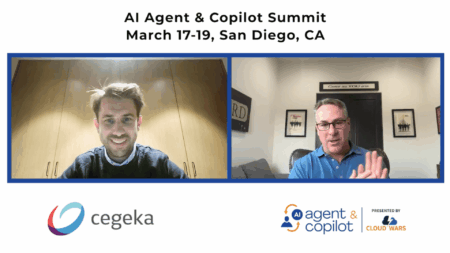Due to the ever-changing digital environment, a Chief Information Officer (CIO) doesn’t have the benefit of predictable operation cycles. Operational activities, programs, and projects are constantly evolving rapidly. Finding a solution and delivering results all occur within a much shorter time frame.
CIO leadership has never been more important in making strategic business decisions in this new IT environment. Any changes to the CIO and other leadership roles can have a big impact on business initiatives or the progress of operational activities. A gap in leadership can cause projects to stall or freeze operational activities. This jeopardizes the entire IT performance.
Most of the new leaders entering this environment do not have the background or history of these decisions. A new CIO often doesn’t know the original discussions or the strategic decisions that lead to an initiative. Without this additional information, strategic initiatives may be eliminated, modified, or reduced in priority.
The CIO Leadership Transition Plan
A CIO needs to ensure that operational activities and strategic initiatives will continue during a leadership transition with only a minimal amount of disruption. A new leadership plan can identify strategic initiatives at risk while using tactics to maintain continuity.
Often times, adjusting to new leadership leads to destabilization of strategic initiatives. These transitions often disrupt existing IT activities while also impacting IT performance. Ensuring a smooth transition process is critical for everything to stay on schedule while also providing accountability. A smooth continuation will avoid damaging your reputation. Meanwhile, it will also maintain profitability by keeping customers happy.
CIO Strategic Initiatives
Compared to strategic activities, leadership transition phases are less likely to impact current business operations. By identifying the same contributing factors of normal operations, one can apply those those factors to strategic initiatives. Ultimately, this ensures support for strategic initiatives. But, it doesn’t guarantee that there won’t be modifications under a leadership transition plan. However, embedding these tactics within strategic initiatives will give a new leader more confidence in prior decisions. This will lessen the chance of reviewing or delaying these existing initiatives.
Here are the five tactics for CIOs to ease the challenges of a leadership transition plan:
1) Authority
Creating a clear mandate and authorization for a strategic initiative isn’t always visible. This is especially true if strategic initiatives extend over a significant amount of time or if it includes multiple phases. Many times the original mandate from the strategic initiatives manager or the executives has been lost in old documents. Anyone currently working on the initiative may know of an approval. However, it isn’t visible to someone new to the company. Sometimes the original approval was verbal or through another external committee, which results in little to no paper trail supporting this initiative. A new leader will need to slow down progress if the mandate isn’t current or if no authorization is available.
CIOs can often help the transition process of a new leader by ensuring the documentation of the authorization for any prior initiative and that it is easily verifiable. A formal document will make it easy to review this plan to ensure that this strategy is still supported by the company. Doing this often will ensure the authorization stays up to date with current goals. Stakeholders and IT staff members will have more confidence in continuing activities during this leadership transition phase, as they know the executive authorizes their actions.
2) Resources
Resources include staffing and budget allocation, as it is unlikely to change normal operational activities during leadership transition if there is a set budget and assigned staff members. However, strategic activities often don’t have the same type of budget. Valid strategies often have staff and budget distributed throughout multiple areas. A leadership transition plan needs to look into funding for the activities, as it would be wise to flag these initiatives for review.
CIOs will need to identify high-priority initiatives to ease the transition process to ensure everything is clearly assigned. Everyone will need to work together, whether it’s the program management office (PMO), human resources, or the chief financial officer (CFO), to ensure the budget includes strategic initiatives. Clearly assigning the budget to these activities will boost confidence for IT staff members and stakeholders.
3) Value
Business stakeholds and executives, that have an interest in the completion of a strategic initiative, contribute to the creation of value. One of the key factors to success is having an activity supported by anyone who has a stake in the final results. Companies need to pursue a business model that reinforces value proposition with product owners. A colleague that’s a visible advocate also offers continuity during a leadership transition phase. A new CIO will not be as likely to interfere with any progress or doubt the purpose of the actions if other leaders remain supportive and can identify the value of the initiative.
A CIO can often ease the transition process to a new leader by ensuring funds for important initiatives while also ensuring support from other leaders outside of IT. CIOs will need to engage with business stakeholders to ensure the expected benefit is well-defined and measured. IT staff will have more confidence that their activities are providing value at the executive level.
4) Commitment
Commitment ensures that a strategy moves from pending to executed. Defining specific actions with dates is a great way to show your commitment to an initiative, as it’s much easier to stop something in planning before it reaches this stage. A new CIO is much less likely to cancel any activities in progress since it can potentially waste existing resources.
One way to ease the transition process is to ensure that major initiatives always have a formal plan by assigning dates and activities. The IT management team will need to focus on operational planning, while the PPM will need to confirm resources and schedules. Ultimately, this minimizes delays once the CIO leaves, as IT staff can maintain momentum on projects with a clear roadmap that highlights the next steps and milestone dates.
5) Incentive
Creating an incentive for continuing strategic initiatives is essential during a leadership transition phase. An incentive can often motivate decision-makers to continue these activities and ensure that they succeed. A strong incentive for executives, to ensure successful completion, is looking forward to a reward. Most new CIOs are less likely to interfere with any activities that will produce positive results, build confidence, increase productivity, and establish value.
Ensuring that major initiatives have clearly defined rewards will help achieve these goals. Everyone will need to work on reaching determining rewards, such as corporate stakeholders, HR employees, and project teams. These rewards could be a promotion, money, or even recognition. An incoming CEO will most likely follow through if they see that they will recieve recognition at completion. Everyone will have much greater confidence knowing that they will be rewarded for their commitment, even with a new leader.
The CIO Action Plan Development
A CIO needs to understand that transition is inevitable, as finding ways to integrate these tactics a prioritize these activities is essential for a successful business.
Understanding these five strategies can help sustain significant work that offers strategic benefits. A transition phase cannot halt or lose the hard work invested in these activites. Uncertainty in the workplace with new leadership often impacts the business in a variety of ways.
It’s essential for a leadership transition plan to take the extra time to ensure they address these five factors. Waiting for the transition to put these measures in place doesn’t provide enough time to prepare for these changes. This can often be the difference in creating a stable work environment during a leadership transition. CIO’s can follow these recommended actions to ensure they position themselves for success.
- Combine all five tactics into a strategic plan to secure continuity and sustainability.
- Assess current activities and strategies to look for any areas at risk during a leadership transition while taking steps to reduce these at-risk activities.
- Communicate with business leaders, executives, and IT management to ensure they understand the importance of continuing high-priority activities.






